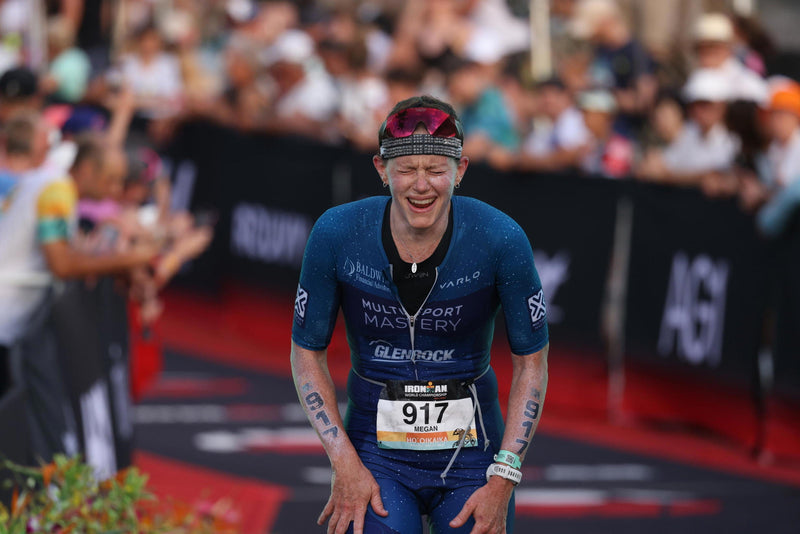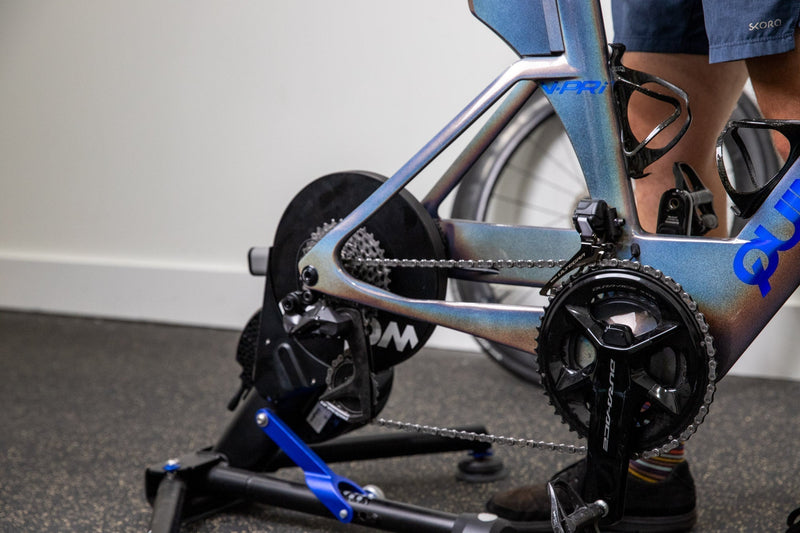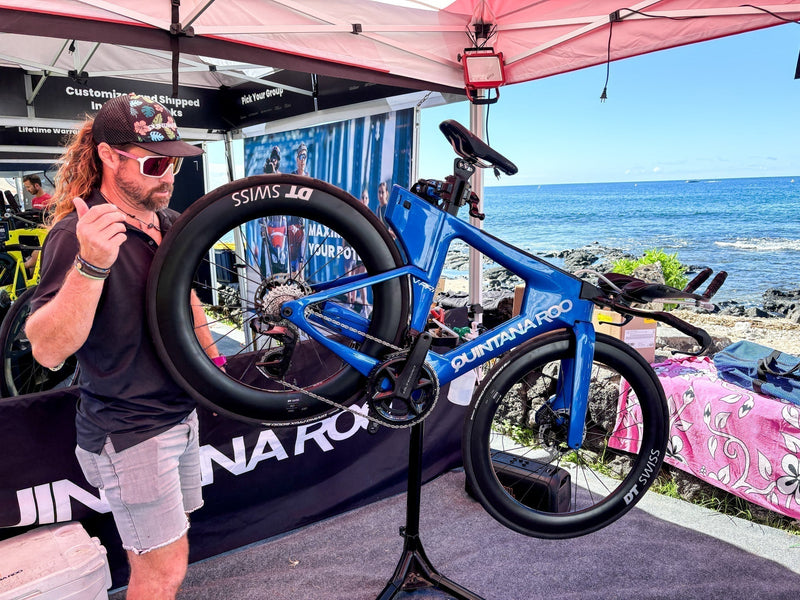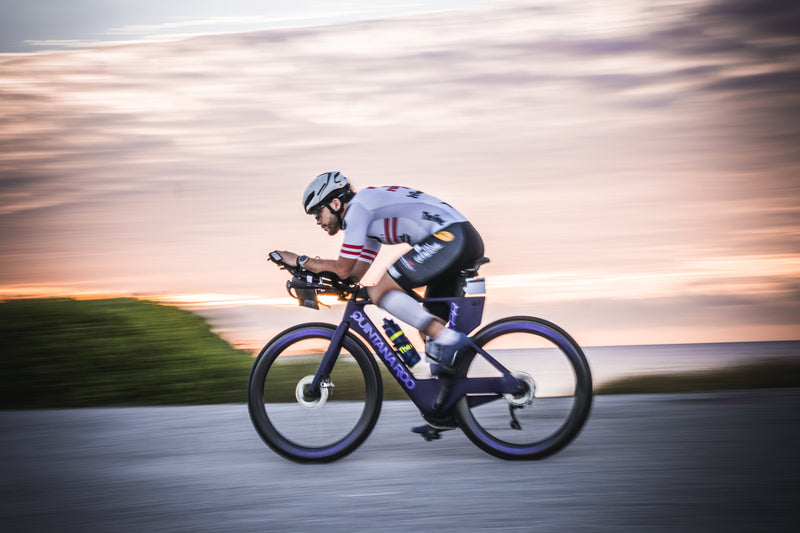GETTING TO KONA: TOP TRAITS OF KONA-QUALIFYING ATHLETES

Article Written by Simon Ward, 6-Time Winner of the 220 Triathlon Awards 'Triathlon Coach of the Year'
Over the last 25 years, I’ve coached and worked with around 50 athletes who have qualified to race at the IRONMAN World Championship in Kona. Each of these athletes have followed a slightly different path to achieve their goal, so it’s impossible to say that a specific number of hours training per week, etc. is what’s required.
There are, however, an amazing number of similarities between their approach that allowed them to make it. These traits are listed below, and may help you if racing on Ali’i Drive and the Queen K are some of your lifetime goals.
Patience
For the majority of Kona-qualifying athletes, it took them several years of trying to finally get that qualification spot. Please don’t think that just because you’re training hard and you’re determined that your goal is going to come quickly and easily.
Consistency
The fitness required to achieve this goal is high, and it takes time to get to this level. There are two approaches, and by far the most successful that I’ve observed is to seek incremental gains with a slightly more cautious approach. This leads to steady upward progress.
Balanced Lifestyle
Having a lifestyle which is conducive to several years of dedicated training is essential. Most of the athletes I’ve worked with have had a “quiet” life - they weren’t party animals, and most of them didn’t have huge amounts of global traveling. Basically, their environment was set up for IRONMAN success.
Solid At All 3 Disciplines
You are not going to win your place by being an uber swimmer, but equally you do not want to be giving up time to your immediate competition. A good swim needs to be followed up with a solid bike, and the ability to put in a solid run off the back of this.
Resilience
The consistency of #2 is achieved by avoiding injury. Most triathlon injuries are running related, and arise as a result of 3 main elements: lack of strength, poor technique, or inappropriate volume.
Focus on Body Work
The injuries that do occur are often a result of inattention to supportive strength & conditioning work, and mobility. Pay a little more attention to these, and slightly less attention to your heart and lungs and you will be amazed at the results.
Good Technique
Good technique will not only help you to avoid injury, but it will also create the efficiency required to maintain your speed and form over 140.6 miles.
Swimming
This is the sport where technique is most important. For all swimmers, regardless of their ability, year-round attention to technique, especially open water swimming technique, is essential.
Cycling
Without getting into numbers, one must have a reasonably high functional threshold. More importantly, a good aerobic threshold which allows the athlete to operate at a sub-maximal pace for many hours without undue fatigue.
Running
It’s not the fastest runners that get the prize. It’s the ones who slow down the least. This is achieved through efficiency and good sub-maximal aerobic conditioning. Running a 3-minute kilometer might be good for your ego, but maintaining 4 minutes per km for 42k is better.
Sleep
Training is nothing without optimal recovery, the best of which is sleep. The majority of Kona qualifiers I’ve worked with have achieved above average sleep, quantity and quality, on a daily basis.
Super Human Ability
Most of these athletes I refer to do not possess super human ability. Yes, they are above average but their results have been achieved through patient, hard work over many years.
Get the Basics Right
The latest gadgets, or current popular training and nutrition methods are all well and good, but none of them can cover up a lack of attention to the basics. Just keep it simple, and do this on a daily basis.
Luck
Gary Player said, “The harder I work, the luckier I get.” To some extent, there is an element of truth in this. Getting a Kona slot often relies on the performance of other people. Sometimes you just need a bit of luck on your side. However, you have to make sure you’re in the right ballpark for the luck to fall your way. This is where the hard work comes in.
Get a Coach
Triathletes are notorious for having their head turned by the latest ideas. There needs to be someone (coach, mentor) who holds the athlete accountable on a regular basis and keeps them heading in the right direction.
Mental Strength
Of course one needs mental strength on race day. But before then, one needs the resilience of mind to repeat the simple stuff daily, for hundreds and hundreds of days. There may be an occasion when you almost achieve your goal, but end up disappointed. At that point, it will be easier to give in than find the inner strength to go through the whole process for another 365 days.
If you are aiming for Kona, enjoy the journey.
Many of the points Simon talks about above are echoed in a podcast that he recorded earlier this month with Matt Lawrence. Matt recently qualified for the 2019 IRONMAN World Championships at IRONMAN Wales. If you haven't already then you can listen to the podcast HERE.
Finally, if you have any comments or questions about this article please post them on Simon's Facebook page HERE or you can email Simon privately.
visit simon ward's website
view more quintana roo articles












